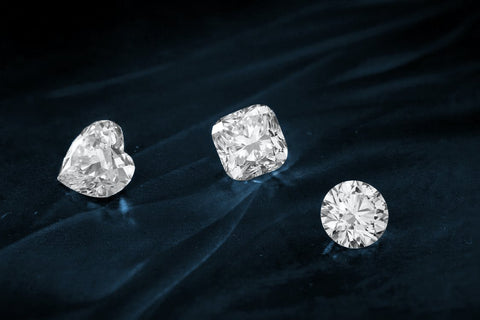As far as appearances go, moissanite and diamond look almost identical. While diamonds reign supreme where brilliance is concerned, the same can also be claimed for their price tag, which may or may not be a good thing for you.
Here’s how moissanite necklaces come through whenever diamond ones fall short.
1. Affordability
Due to where they come from, moissanite jewelry may only cost a fraction of its diamond counterpart. You see, diamond is a natural gemstone that’s created after eons from pressurized carbon. The stone might be increasingly rare, but not so much that the focus would shift towards the more affordable, lab-grown diamonds.
On the other hand, since moissanite came from a meteor that landed on earth millennia ago, we see less of the naturally occurring kind in this day and age. It goes without saying that most jewelry stores only sell lab-grown moissanite, making them a more affordable and readily available alternative to diamonds.
2. Durability
With gemstones, especially those incorporated in engagement rings, durability ranks up there with affordability. You’re likely to wear them every day and rub them across surfaces that may threaten their appearance. Thus, you need a stone that ranks as high—if not higher—on the hardness scale as diamond.
With a hardness level of 9.25 compared to the diamond’s 10, synthetic moissanite is harder than all naturally occurring gemstones, except the king of stones itself. This means it has to take knocking the stone against an extremely hard surface over a long period to damage the surface.

3. Sustainability
Diamond mining is rife with ethical and environmental pitfalls, one of them being the practice of trading “blood diamonds”: selling precious stones of a country to fund hostile activities against the same country.
Other concerns related to diamond mining include poor working conditions, criminally low wages, and other labor violations. While rules have been put in place to combat these issues, sellers often can’t tell the origin of the diamonds they source any more than the sources do.
Conversely, moissanite does not have the lack of regulation and abundance of ambiguity found in the diamond-mining industry. It’s eco-friendly owing to the way it’s produced, and even when it’s not, you can easily trace its origins.
4. Quality-Control
A diamond is appraised by the 4Cs: cut, carat, clarity, and color. Because it is naturally occurring, a seller has to have the best diamond cutter to bring out its brilliance and make bank.
On the other hand, the gemstone industry indisputably has better control over the quality of moissanite, which is why it’s only judged by color.
While moissanite can be colorless, nearly colorless, or subtly tinted, it’s always clear and weighs way less. When these factors come together, they produce almost the same product at a much lower going rate.
Buy a Moissanite Diamond Necklace for Women Online
At I-ZARA Jewelry, we have the next best thing to diamonds: a one-carat Moissanite Diamond Halo Pendant Necklace, as brilliant as any naturally occurring diamond.
Check out our gemstone necklaces, stainless-steel charm bracelets, sterling silver earrings, and titanium rings for men to buy more affordable alternatives.
Reach out to our store to learn more about diamond rings for women and their alternatives.


